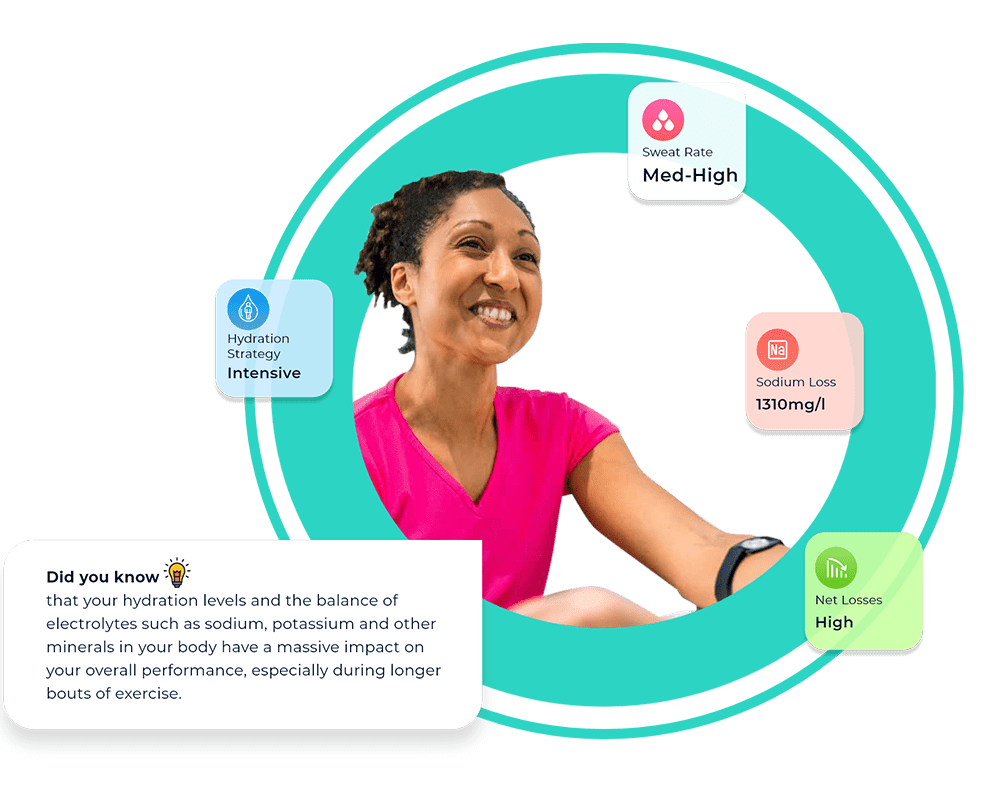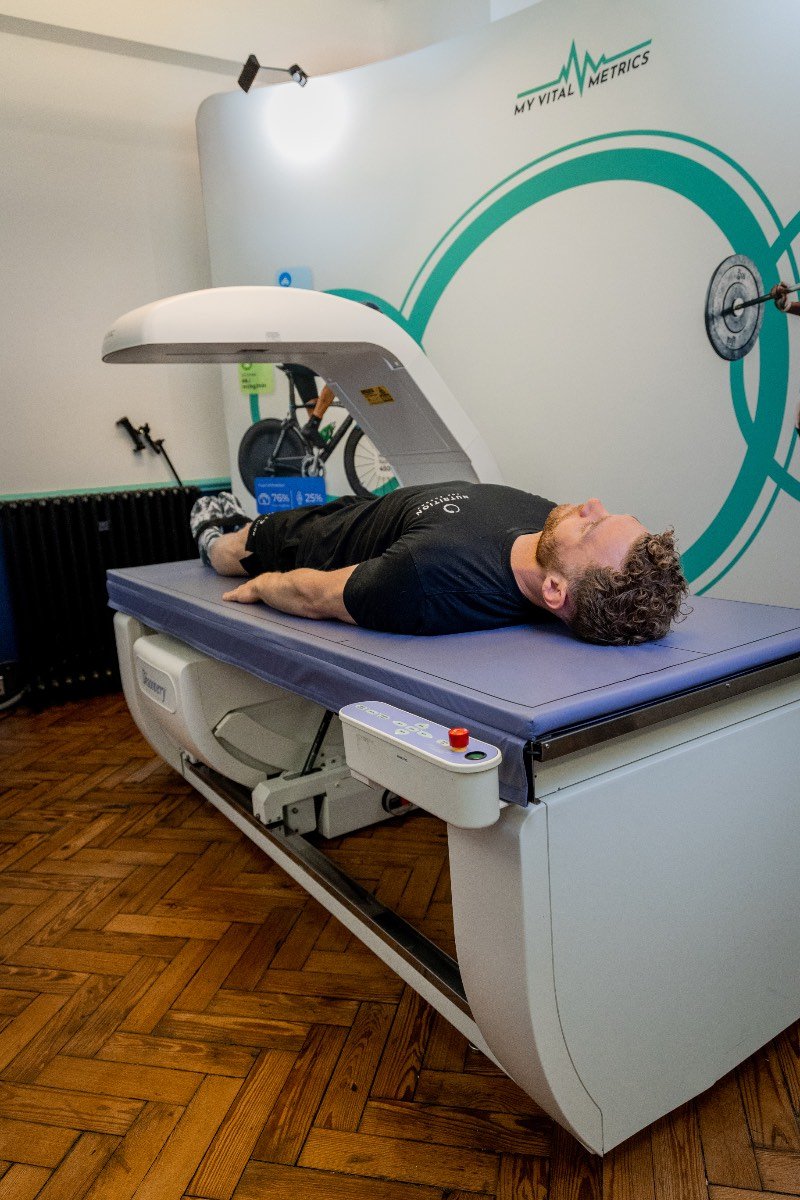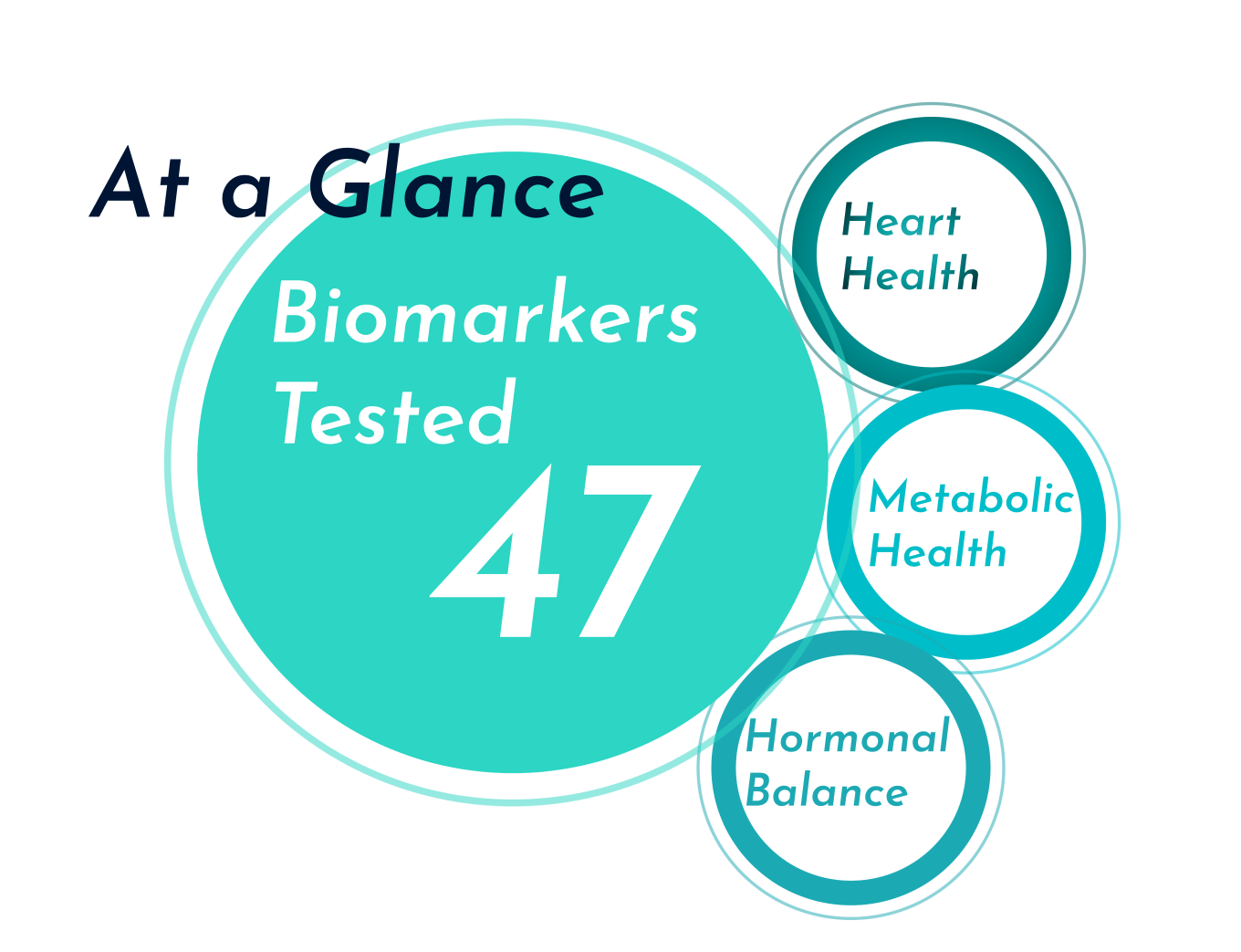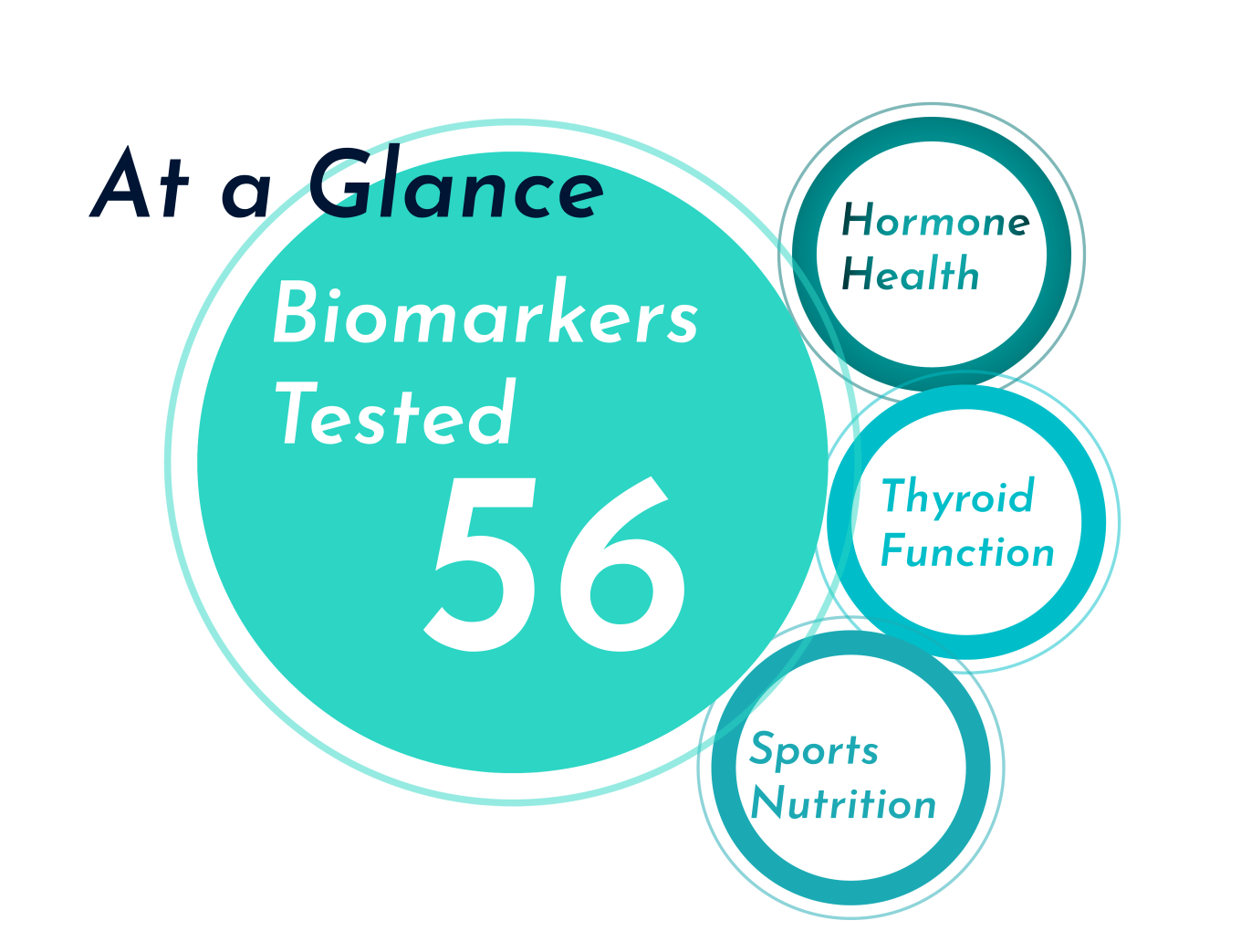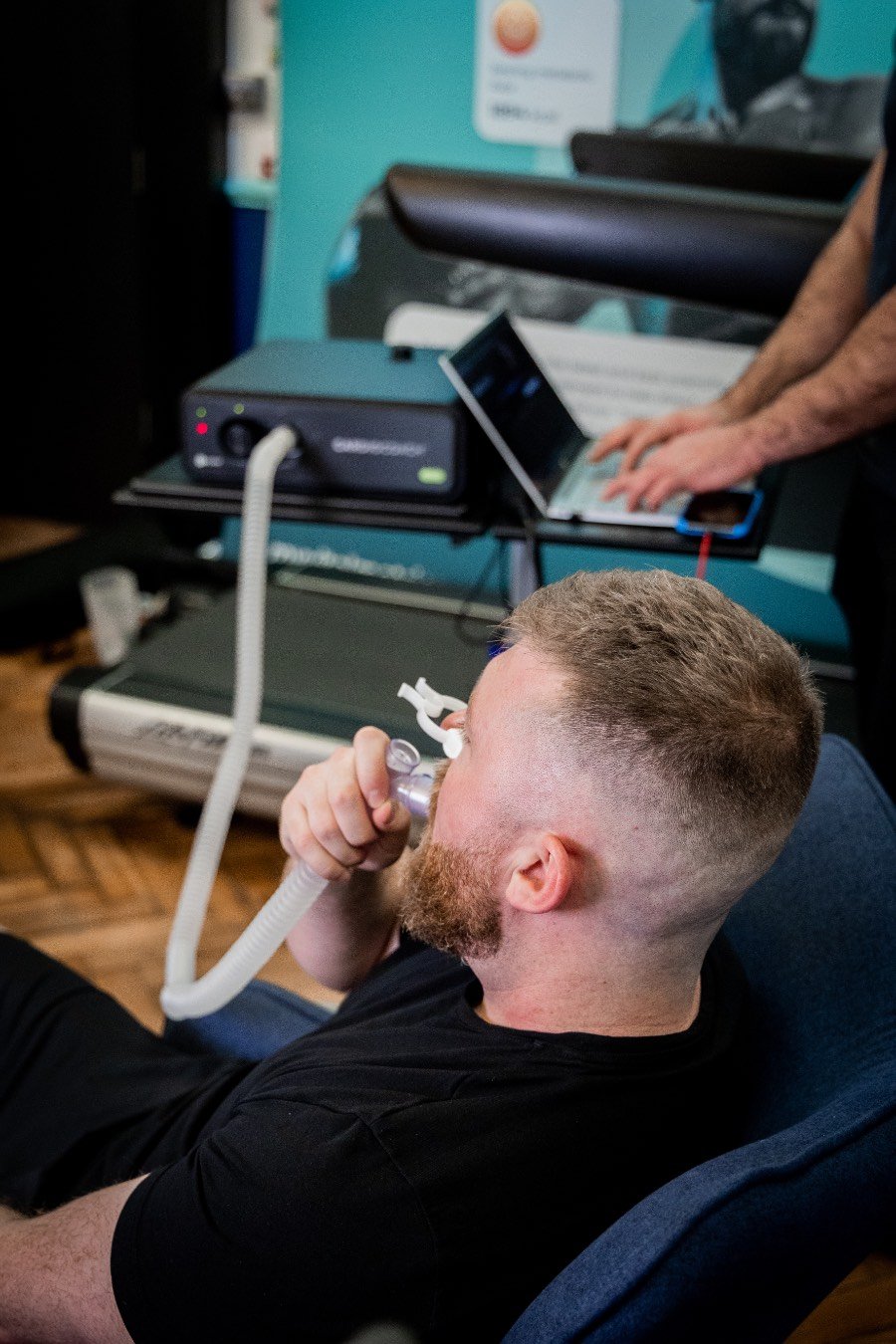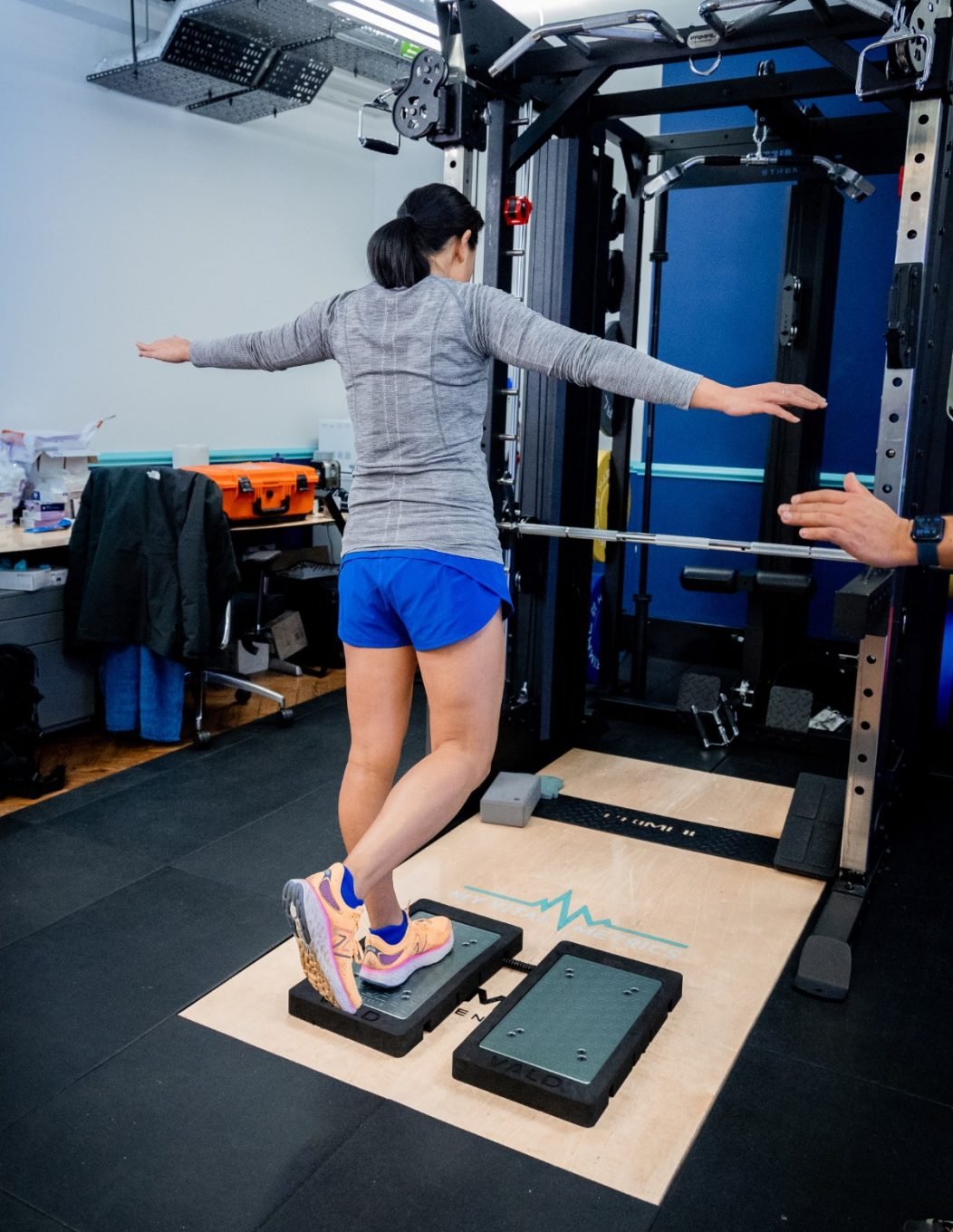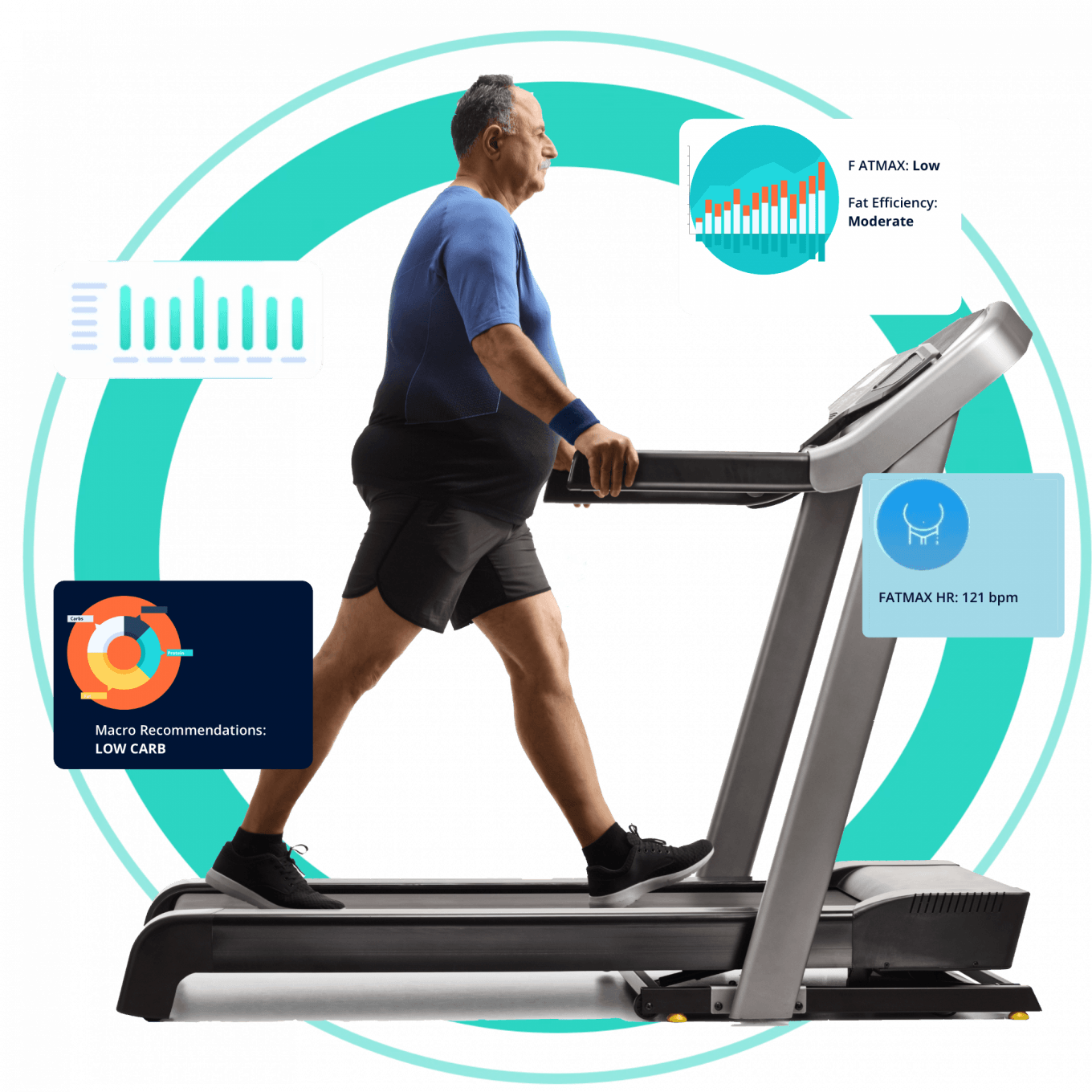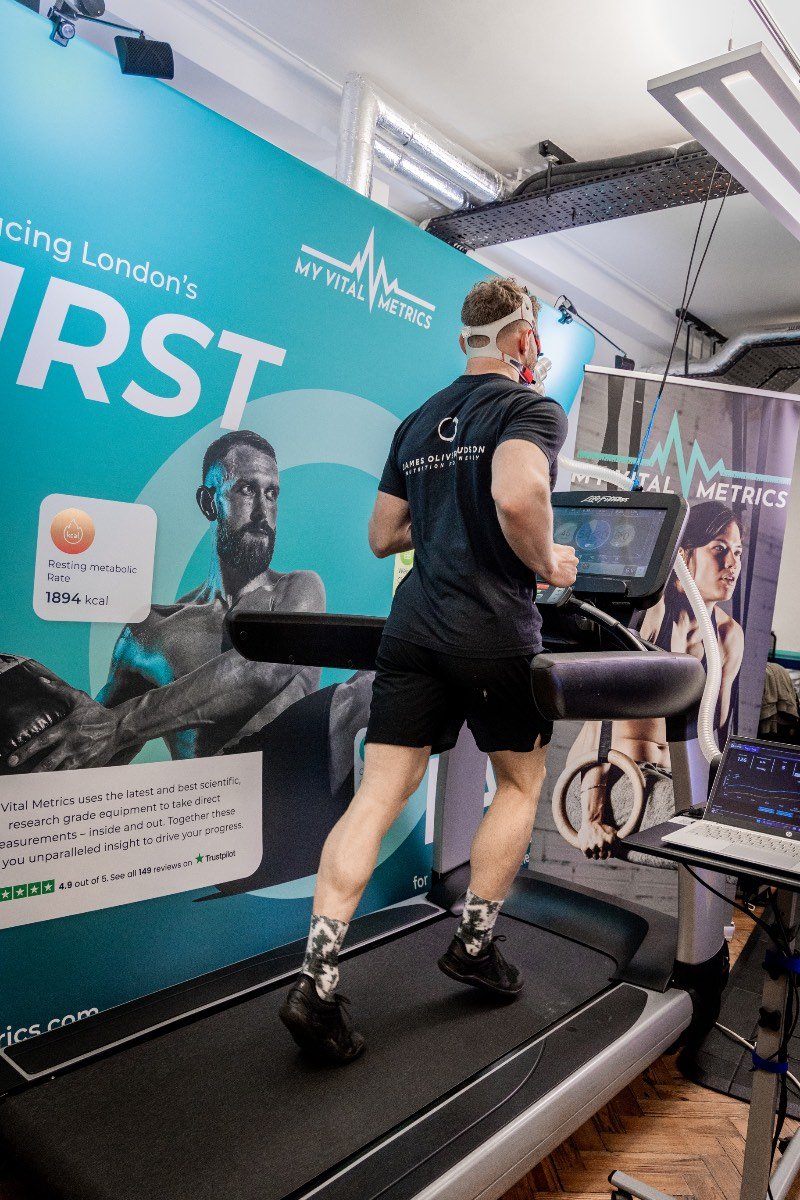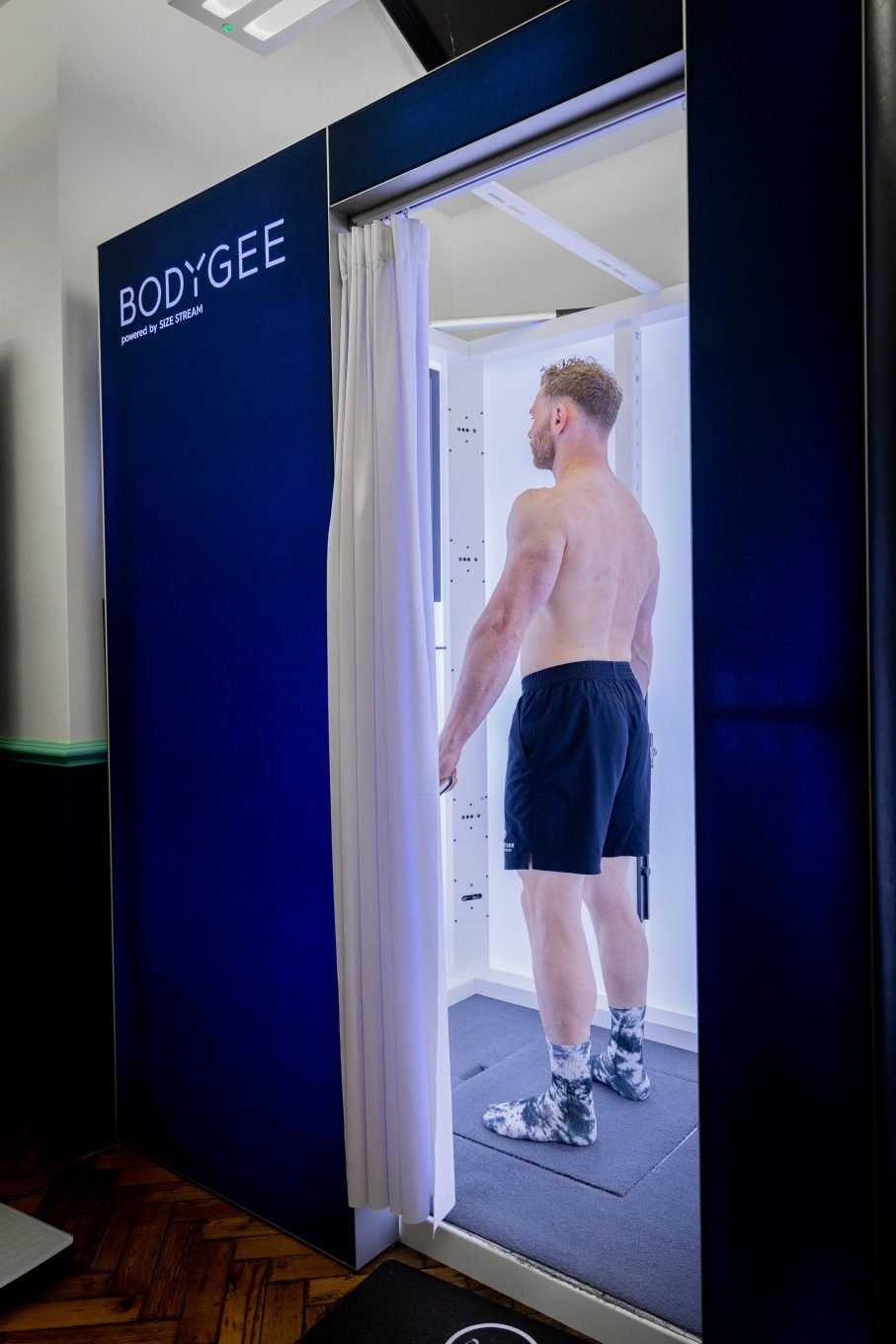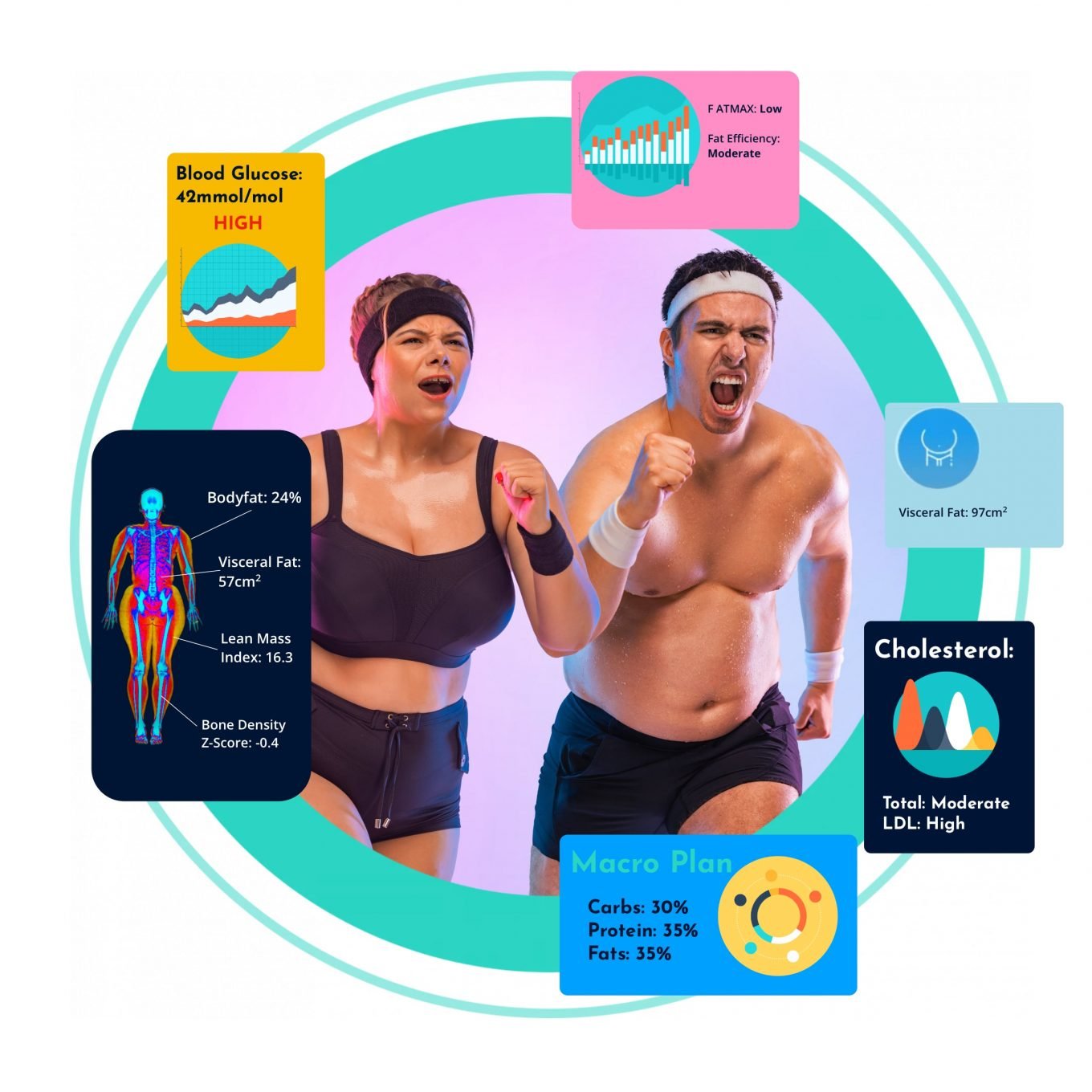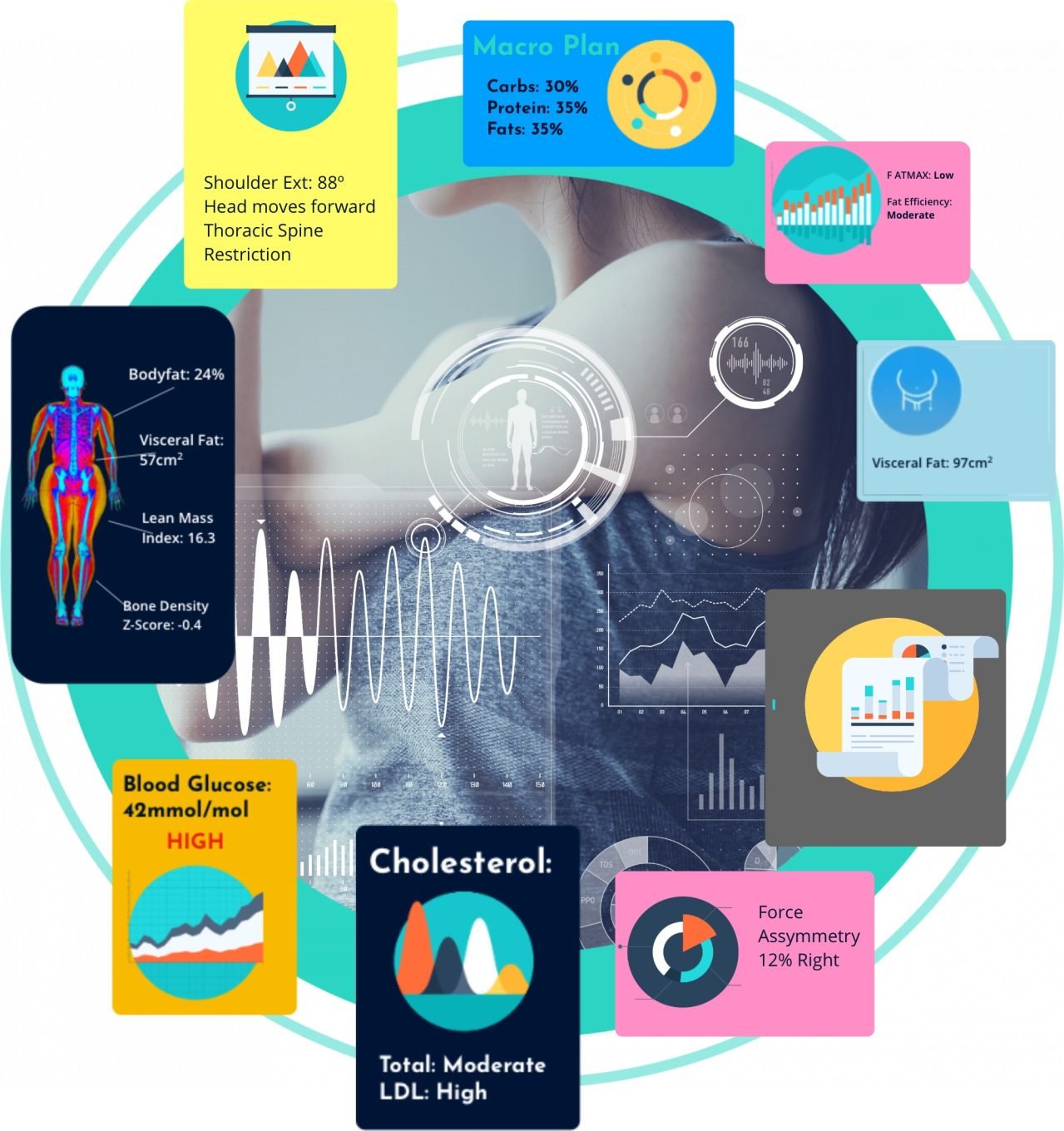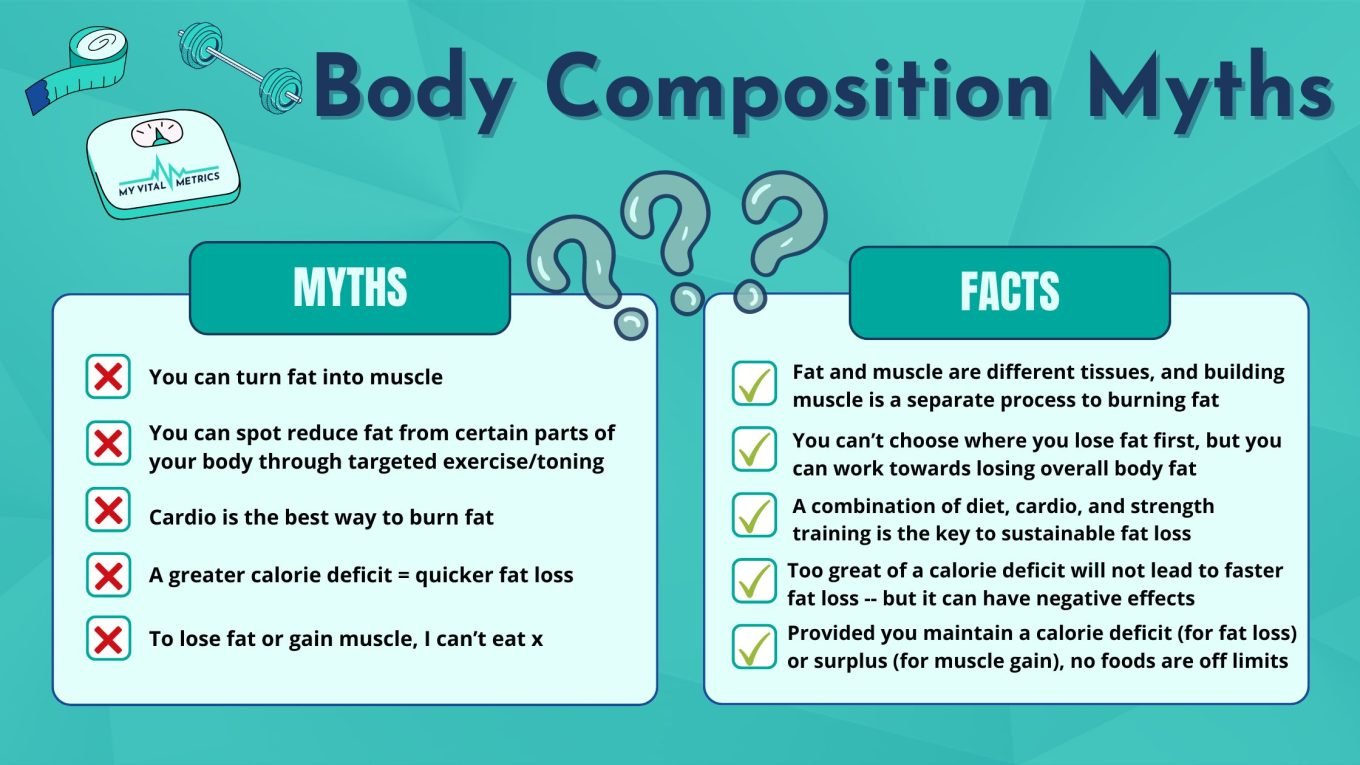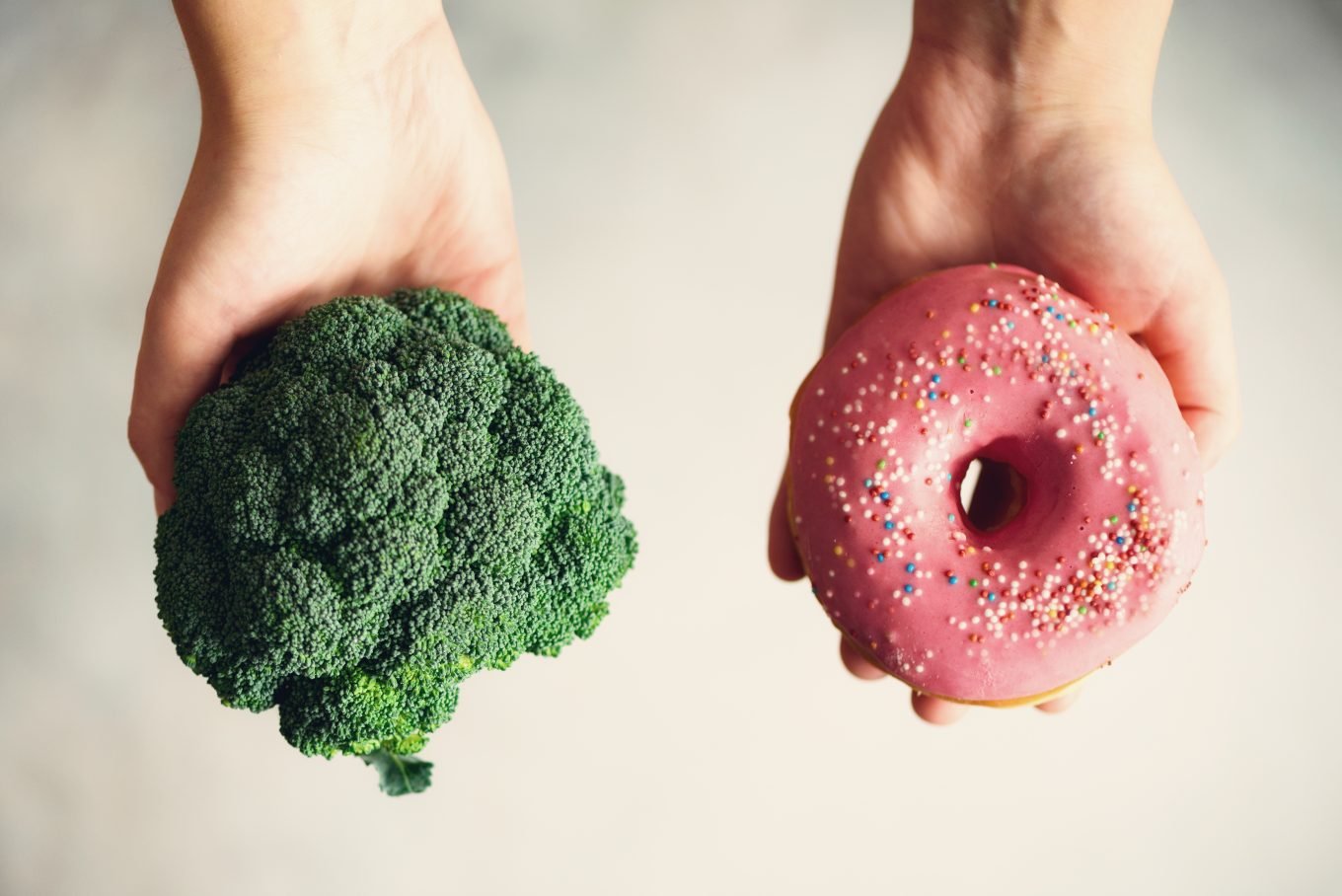Myth: You can turn fat into muscle
One of the most common body composition myths is that you can turn fat into muscle, or vice versa. Body recomposition is often discussed as though it were a singular process, but it’s actually two distinct processes: fat loss and muscle gain.
Fact: Fat and muscle are different tissues, and building muscle is a separate process to burning fat
Fat loss
Losing fat requires a calorie deficit (consuming fewer calories are used through everyday activity and burnt through exercise). A calorie deficit prompts the body to utilise alternative forms of energy, breaking down tissues to fuel key bodily processes.
In a calorie deficit, the body initiates the breakdown of fatty tissues into fatty acids through a process called lipolysis. These fatty acids enter the bloodstream and are further metabolised into additional compounds (such as ketones) which serve as a source of fuel when nutritional intake is low. This process facilitates weight loss through the “burning” of fat for energy. At no point is this fat used to form new tissues such as muscle, even if you’re working out.
Muscle gain
On the other hand, building muscle requires a calorie surplus (consuming more calories than are used) and progressive challenge to muscles through strength or resistance training. When these conditions are met, muscle hypertrophy (an increase in muscle mass) is possible.
Of course, it’s a little more complicated than that, with plenty of other factors coming into play. Training type, volume, load, sleep quality, nutrient timing, and protein intake all play a role in successful muscle gain. However, crucially, strength training will not “turn” fat into muscle. Rather, when combined with a caloric surplus and adequate protein intake, strength training will help build new muscle and increase your overall muscle mass.
Myth: You can spot reduce fat
Contrary to popular belief, you can’t choose where you burn fat first (or last). The idea of spot reduction of fat appeals to many, and may seem intuitive. After all, for muscle development, if you want big shoulders, you need to work your shoulders.
Fat loss is not like this, though. Fat is a fuel source for the whole body, and when the body burns fat, this is broken down from where the metabolism wants to break it down, sent to the liver for further processing, and then sent around the body for use as fuel.
Focused strength training can build muscle in a specific area (for example, the legs), which can add shape and lend you a leaner appearance, but exercise alone will not lead to a reduction in fat in the area.
Fact: You can’t choose where you lose fat first, but you can work towards losing overall body fat
Where we store fat and how this fat is lost during a calorie deficit is largely determined by genetics and hormonal state. For example, people with a higher level of testosterone will tend to store more fat around the midsection, while those with more estrogen will tend to store more fat around the hips and thighs. While all physical activity helps to boost your calorie burn, you won’t necessarily see fat lost from the areas you’re hoping for first.
As an example, core workouts are a popular method of building core strength. Incorporating core work into your workout routine is a great way to build strength in your abdominals, obliques, pelvic muscles, and lower back, and build a firm foundation for other compound movements. However, these exercises won’t burn fat from your stomach area or automatically lead to six-pack abs if your body fat percentage is higher. This doesn’t mean these exercises aren’t worth incorporating; however, you should aim to be realistic about what they can and can’t do for your body composition.
Myth: Cardio is the best way to burn fat
Cardiovascular exercise such as walking, running, swimming, or cycling is a fantastic way to improve cardiovascular health. Cardio helps improve your speed and stamina, reduces your risk of certain chronic conditions, boosts your mood, and has a whole host of other health benefits. However, contrary to common belief, it is not an efficient way to burn fat.
Fact: A combination of diet, cardio, and strength training is the key to sustainable fat loss
To understand why cardio alone isn’t the best strategy for fat loss, it’s important to understand why it’s many people’s go-to exercise for weight loss.
Cardio exercise is a common fat loss strategy because it has a relatively high-calorie burn. For example, if a 155lb adult ran at a 6mph pace (a 10 min mile) for 1 hour, they would burn a total of 704kcal. If that same person did a vigorous weight lifting workout for 1 hour, on the other hand, they would burn a total of 422kcal. From this comparison alone, it would seem that the run is a better weight loss strategy than the strength workout.
However, what this calculation doesn’t take into account is that both cardio and strength training affect more than pure calorie burn.
Weight training helps to build muscle mass, which in turn increases metabolic rate, burning more calories over time. Additionally, the metabolic effects of weight training aren’t limited to the time you’re exercising – calorie burn remains higher after your session to aid muscle repair.
Over time, incorporating strength or resistance training into your workout regime is likely to further your fat loss goals through an increase in lean muscle mass and a boosted metabolic rate. Weight training while in a calorie deficit has the added benefit of sending signals to your metabolism indicating that you need these muscles – this means that any deficit will preferentially be taken from fat, not muscle, helping you to maintain muscle mass as you lose fat.
The second key component to sustainable fat loss is nutrition. Even with a routine of cardio and strength training, if you’re not eating in a calorie deficit, you won’t see fat loss. Working to incorporate a moderate calorie deficit to accompany your increased activity level will help you to see the fat loss you’re after.
Myth: The greater the calorie deficit, the quicker the fat loss
